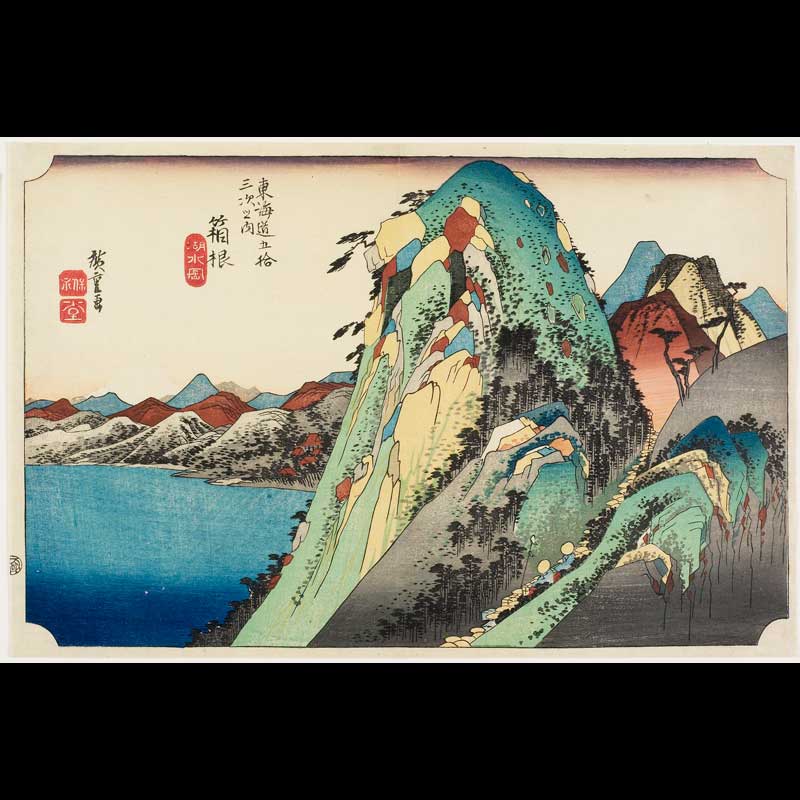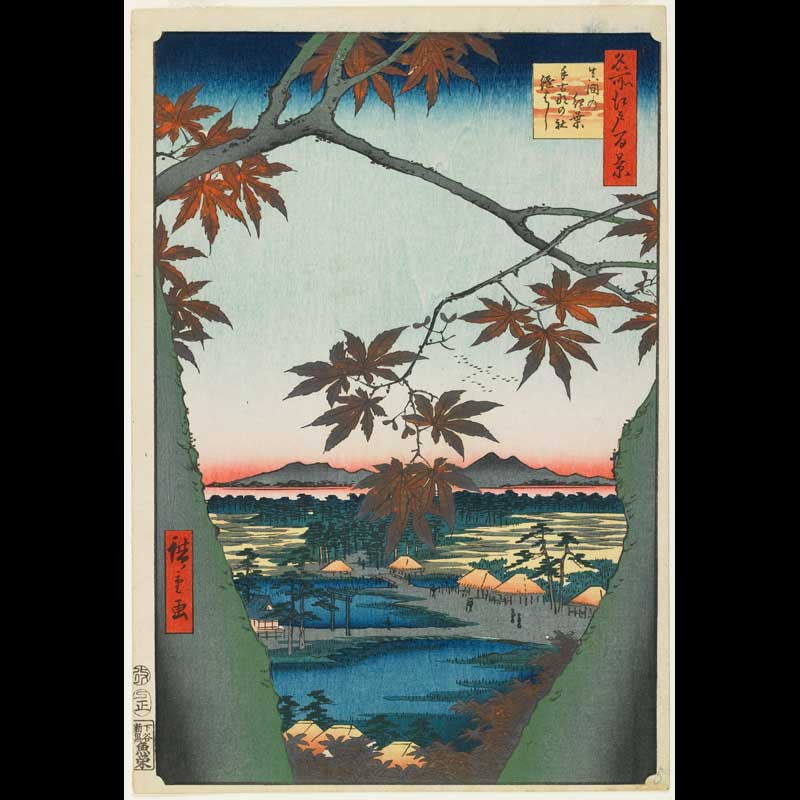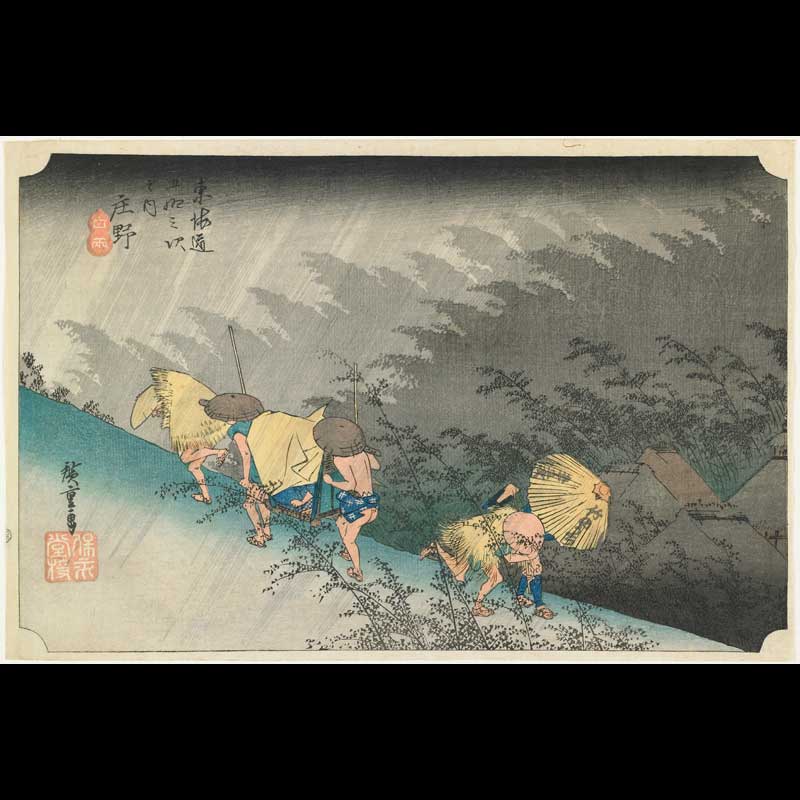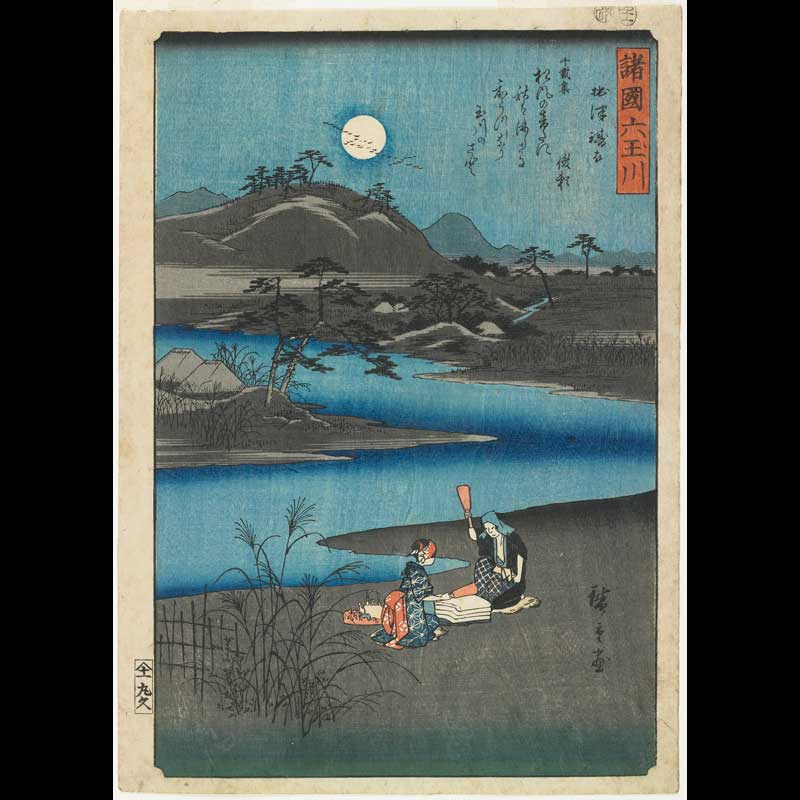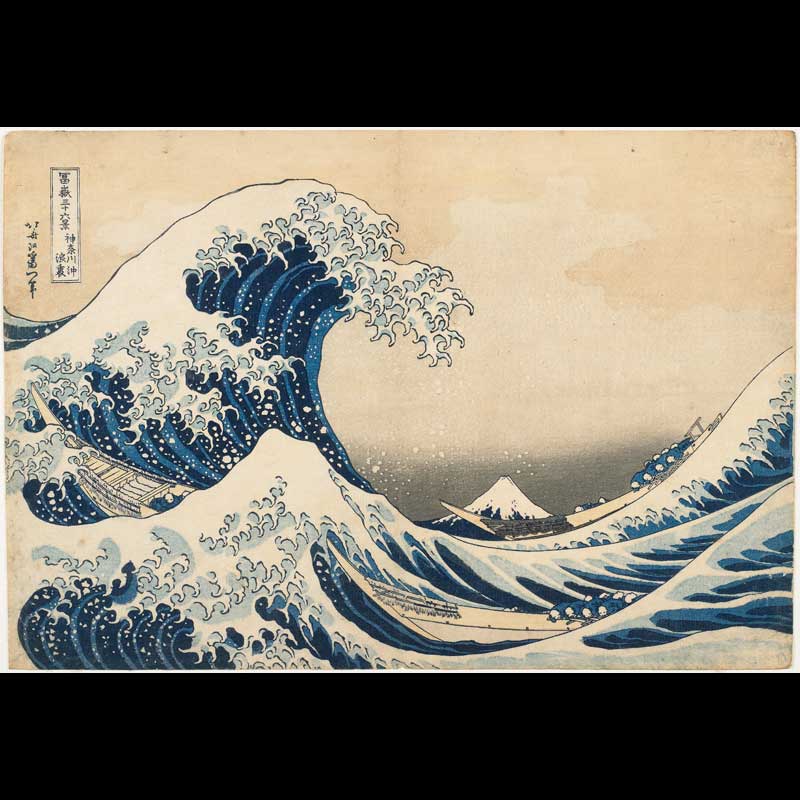Click on the images for a more detailed description.
During the early decades of the Edo period (1615–1868), travel in Japan was dangerous and arduous. However, the shogun’s requirement that feudal lords spend half their time at his court in the city of Edo led to roadway improvements and the establishment of checkpoints and relay stations. Towns grew around the stations, with inns, restaurants, teahouses, souvenir shops, and local guides catering to travelers.
Commoners evaded government restrictions on travel by claiming the need to undertake religious pilgrimages to distant temples and shrines. But in fact, these trips became pleasure outings allowing travelers to experience firsthand the scenic beauty of places long lauded in literature and to partake of strange cuisines, puzzle over regional dialects, and marvel at local legends and beliefs.
Printed guidebooks first appeared in the mid-17th century. By the late 18th century, artists were being commissioned to design illustrated versions–often including maps and aerial views with points of interest clearly marked. The emergence of landscape prints as a separate genre in the 1830s has been linked to the importation of a synthetic blue pigment known as Prussian or Berlin blue, which yielded deeper, richer hues that were less apt to fade. Artists soon capitalized on the opportunity to render the sea, rivers, and sky in a fresh and vivid manner irresistible to their customers.
Although landscape prints could serve as beautiful reminders of a journey to a distant place, most people who bought them probably had little chance to travel. The images provided a vicarious experience, transporting viewers to breathtaking locations far from the problems and inconveniences that vexed their daily lives.


